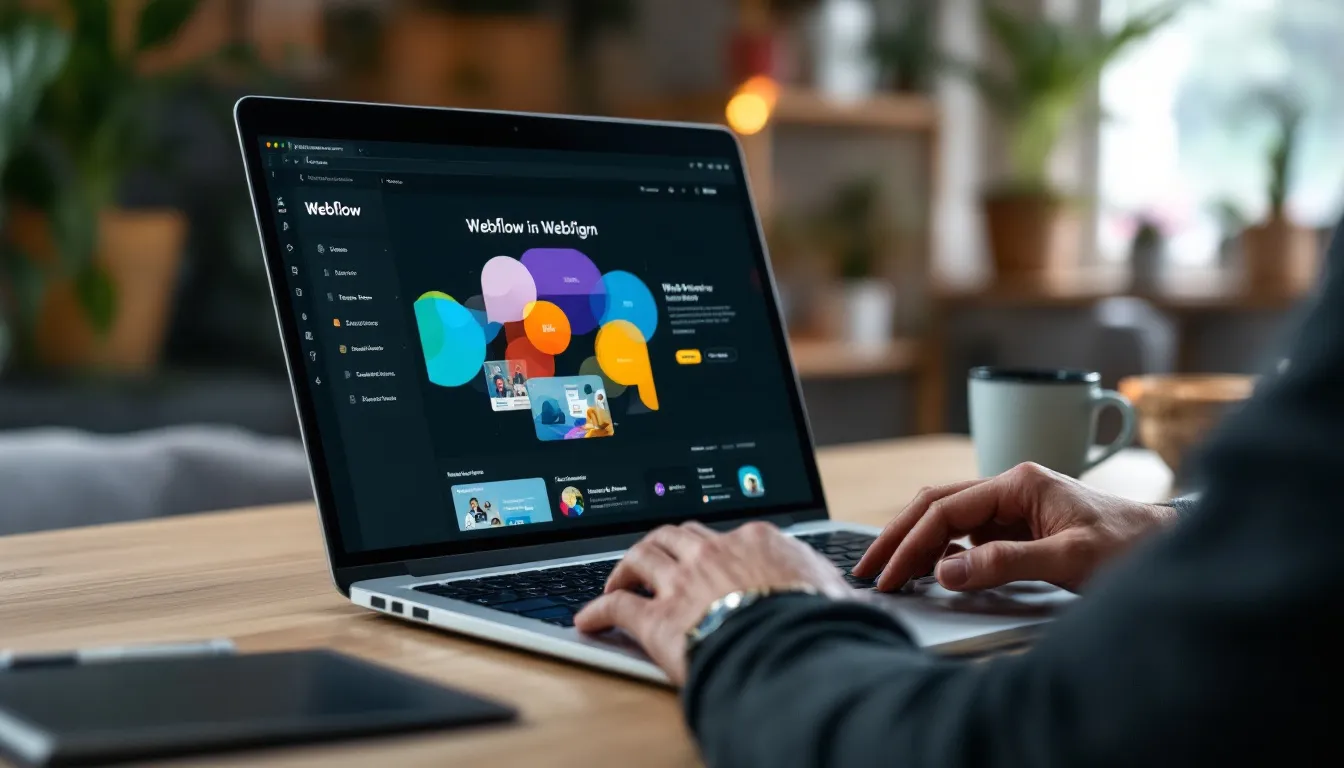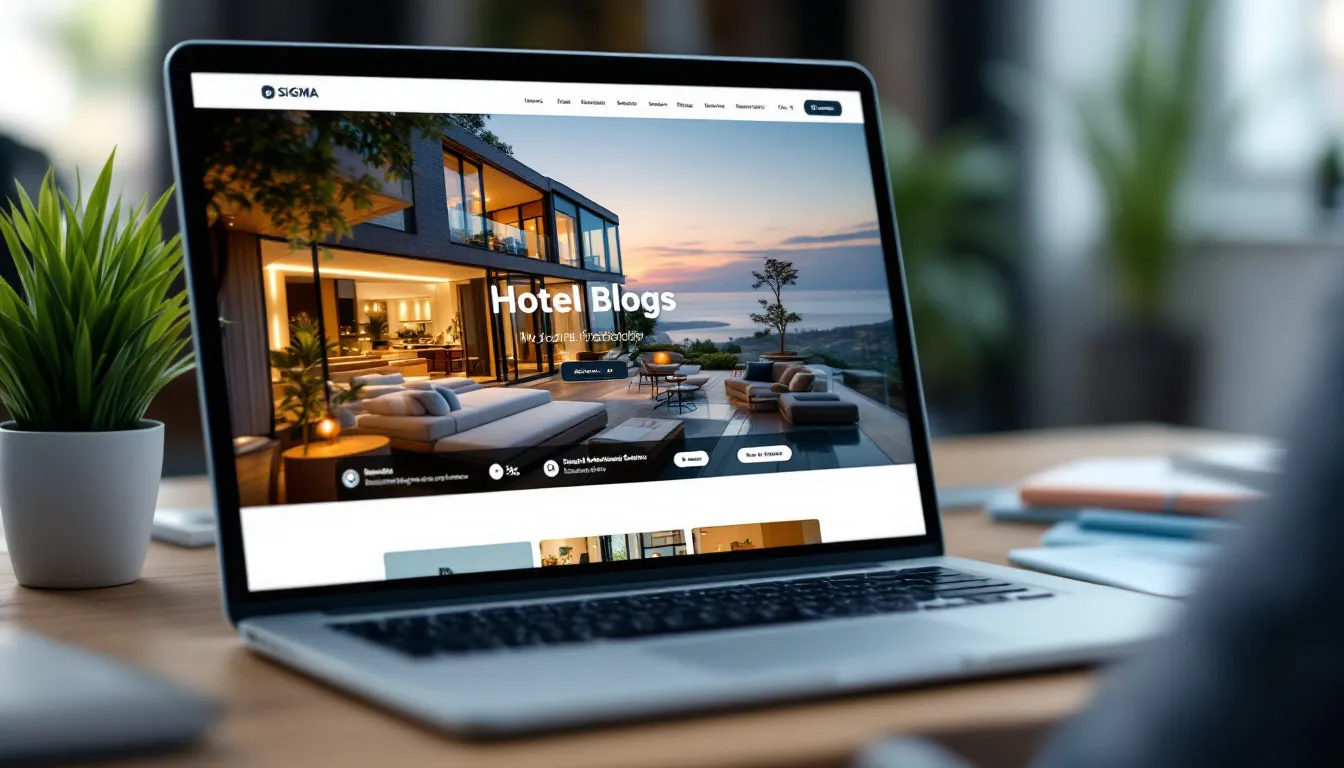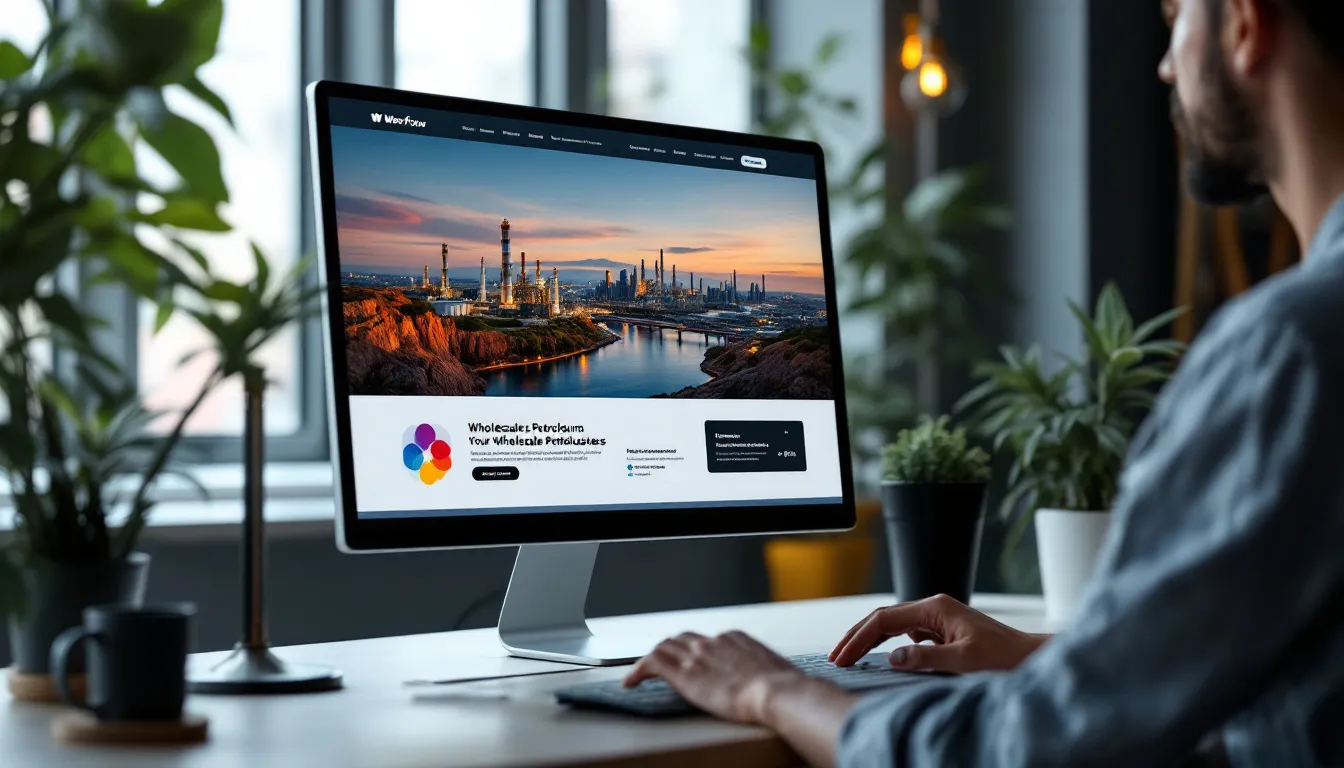See How I Helped My Client Achieve Better Results
A real-life case study of a website redesign on CMS — optimized for growth, easy content management, and stronger SEO performance.
- Custom Design That Reflects Your Brand Unlike cookie-cutter templates, Webflow offers full creative freedom. I design websites tailored to your specific goals, ensuring a professional look that resonates with your audience.
- Clean, SEO-Friendly StructureWebflow’s built-in SEO capabilities allow me to create a well-structured website with:
- Clean, keyword-rich URLs for better search visibility.
- Logical internal linking to boost user navigation and page authority.
- Schema markup integration for enhanced search engine understanding.
- Responsive by DesignYour audience is using desktops, tablets, and smartphones. Every site I build is optimized for all screen sizes, ensuring a seamless experience no matter how visitors access it.
- CMS That Puts You in ControlWith Webflow’s powerful CMS, you can easily manage and update your content, from blog posts to product descriptions, without needing technical expertise.
How to Build a Hotel Website in Webflow Using CMS: A Guide for Designers
Creating a hotel website that captivates visitors and converts them into guests is a task that requires careful planning and execution. With Webflow's powerful CMS capabilities, designers can craft stunning, user-friendly websites that not only showcase the hotel's offerings but also enhance the user experience, optimize for search engines, and improve conversion rates. This guide will walk you through the essential steps to build a hotel website in Webflow, ensuring that every aspect aligns with best practices in UX, SEO, and CRO.
Understanding the Importance of a Hotel Website
In today's digital age, a hotel website serves as the primary touchpoint for potential guests. It is more than just an online brochure; it is a platform that must engage users, provide essential information, and facilitate bookings. A well-designed website can significantly influence a guest's decision-making process, making it crucial to create an appealing and functional online presence.
Moreover, a hotel website can enhance brand identity and credibility. It allows hotels to showcase their unique offerings, from luxurious rooms to special amenities, and establish a connection with potential guests. By utilizing Webflow's CMS, designers can create dynamic content that can be easily updated, ensuring that the website remains fresh and relevant.
In addition to showcasing accommodations, a hotel website can serve as a valuable resource for travelers seeking local attractions, dining options, and activities. By integrating a blog or a recommendations section, hotels can provide curated content that not only enhances the guest experience but also positions the hotel as a knowledgeable local authority. This strategy can lead to increased engagement and repeat visits, as guests appreciate the personalized touch and insider tips that help them make the most of their stay.
Furthermore, incorporating user-generated content, such as guest reviews and testimonials, can significantly bolster a hotel's online reputation. Positive feedback from previous guests can build trust and encourage new visitors to make reservations. Additionally, a well-structured website can optimize SEO, making it easier for potential guests to discover the hotel through search engines. By focusing on keywords related to the hotel's location and unique offerings, hotels can improve their visibility and attract a wider audience, ultimately driving more bookings and enhancing their overall success in the competitive hospitality market.
Getting Started with Webflow
Before diving into the design process, it’s essential to familiarize yourself with Webflow. This platform combines the power of a CMS with the flexibility of a visual design tool, making it an ideal choice for hotel websites. Here are a few key features that make Webflow stand out:

Visual Design Interface
Webflow's intuitive drag-and-drop interface allows designers to create visually stunning websites without needing extensive coding knowledge. This feature is particularly beneficial for those who want to focus on aesthetics while ensuring that the site is functional and user-friendly.
CMS Functionality
The CMS capabilities in Webflow enable designers to create custom content types, such as room listings, blog posts, and event calendars. This flexibility allows for easy updates and management of content, ensuring that the website remains engaging and informative.
Responsive Design
With a growing number of users accessing websites via mobile devices, responsive design is crucial. Webflow automatically generates responsive layouts, ensuring that the hotel website looks great on any device, whether it’s a smartphone, tablet, or desktop.
Planning Your Hotel Website Structure
Before jumping into the design phase, it’s vital to plan the structure of the hotel website. A well-thought-out structure not only enhances user experience but also aids in SEO optimization. Here are some essential pages to consider:
Homepage
The homepage is the first impression potential guests will have of the hotel. It should be visually appealing and provide a clear overview of what the hotel offers. Key elements to include are high-quality images, a brief introduction, and easy navigation to other sections of the site.
Rooms and Suites
This section should showcase the different types of accommodations available, complete with descriptions, pricing, and high-quality images. Utilizing Webflow's CMS, designers can create dynamic listings that can be easily updated as new rooms are added or pricing changes.
Amenities and Services
Highlighting the amenities and services offered by the hotel is essential for attracting guests. This section can include details about dining options, spa services, fitness centers, and any unique offerings that set the hotel apart from competitors.
Designing the Hotel Website in Webflow
Once the structure is in place, it’s time to start designing the website. Webflow provides a wealth of design tools and features that can help create a visually stunning and user-friendly site. Here are some design tips to keep in mind:
Choosing the Right Color Palette
The color palette should reflect the hotel’s brand identity and create a welcoming atmosphere. Soft, neutral tones often work well for hotels, as they evoke a sense of calm and relaxation. However, incorporating bold accent colors can add personality and draw attention to key elements.
Utilizing High-Quality Imagery
Images play a crucial role in the hotel website design. High-quality photos of rooms, amenities, and the surrounding area can significantly impact a visitor's perception of the hotel. Consider hiring a professional photographer to capture the essence of the hotel, ensuring that the images are inviting and engaging.
Creating an Intuitive Navigation Menu
A well-organized navigation menu is essential for enhancing user experience. It should be easy to understand and allow visitors to find the information they need quickly. Consider using dropdown menus for subcategories, ensuring that the navigation remains clean and uncluttered.
Implementing SEO Best Practices
Search engine optimization (SEO) is crucial for ensuring that the hotel website ranks well in search engine results. By following SEO best practices, designers can help increase visibility and attract more potential guests. Here are some key strategies:
Keyword Research
Identifying relevant keywords is the first step in optimizing a hotel website for search engines. Consider terms that potential guests might use when searching for accommodations, such as “luxury hotel in [location]” or “family-friendly hotel near [attraction].” Incorporating these keywords naturally into the website’s content can improve search rankings.
Optimizing Meta Tags
Meta tags, including title tags and meta descriptions, play a significant role in SEO. They provide search engines with information about the content of the page. Ensure that each page has unique and descriptive meta tags that incorporate relevant keywords while enticing users to click through.
Creating Quality Content
Regularly updating the website with fresh, high-quality content can boost SEO efforts. Consider adding a blog section that features articles about local attractions, travel tips, or hotel news. This not only helps with SEO but also positions the hotel as an authority in the industry.
Enhancing User Experience (UX)
Creating a seamless user experience is vital for converting visitors into guests. A well-designed website should be easy to navigate, visually appealing, and provide all the necessary information. Here are some UX best practices to consider:
Fast Loading Times
Website loading speed is a crucial factor in user experience. Slow-loading pages can lead to high bounce rates, as visitors may become frustrated and leave the site. Optimize images and minimize code to ensure that the website loads quickly across all devices.
Clear Call-to-Actions (CTAs)
Effective CTAs guide users toward taking desired actions, such as booking a room or signing up for a newsletter. Ensure that CTAs are prominently displayed and use action-oriented language to encourage clicks. For example, “Book Your Stay Now” or “Get Exclusive Offers” can create a sense of urgency.
Accessible Design
Accessibility is an essential aspect of UX design. Ensure that the website is usable for all visitors, including those with disabilities. This can include using alt text for images, ensuring sufficient color contrast, and making navigation keyboard-friendly.
Conversion Rate Optimization (CRO)
Once the website is live, it’s essential to focus on conversion rate optimization (CRO) to maximize bookings. By analyzing user behavior and making data-driven decisions, designers can enhance the website’s effectiveness. Here are some strategies to consider:
Utilizing Analytics Tools
Implementing analytics tools, such as Google Analytics, allows designers to track user behavior on the website. By analyzing metrics such as bounce rates, average session duration, and conversion rates, insights can be gained into what is working and what needs improvement.
Testing and Iterating
A/B testing is a powerful method for optimizing website elements. By testing different versions of CTAs, images, or layouts, designers can determine which variations yield the best results. Continuous iteration based on user feedback and data can lead to improved conversion rates over time.
Offering Incentives
Consider offering incentives to encourage bookings, such as limited-time discounts or exclusive packages. Highlighting these offers on the homepage or through pop-ups can create a sense of urgency and motivate visitors to complete their reservations.
Maintaining the Hotel Website
Once the hotel website is live, ongoing maintenance is crucial for ensuring that it remains functional and relevant. Regular updates and optimizations can help maintain performance and user engagement. Here are some maintenance tips to consider:

Regular Content Updates
Keeping the website content fresh is essential for both SEO and user engagement. Regularly update room availability, pricing, and special offers. Additionally, consider adding new blog posts or articles to keep visitors informed and engaged.
Monitoring Performance
Continuously monitor website performance using analytics tools. Keep an eye on key metrics, such as page load times, bounce rates, and conversion rates. Regularly reviewing this data can help identify areas for improvement and inform future design decisions.
Staying Current with Trends
The digital landscape is constantly evolving, and staying current with design trends and best practices is essential. Regularly review industry trends and consider implementing new features or design elements that can enhance the hotel website's effectiveness.
Conclusion
Building a hotel website in Webflow using CMS is a rewarding endeavor that can significantly impact a hotel's success. By focusing on user experience, search engine optimization, and conversion rate optimization, designers can create a website that not only attracts visitors but also converts them into loyal guests. With careful planning, attention to detail, and ongoing maintenance, a hotel website can become a powerful tool for driving bookings and enhancing brand identity.
Whether you are a seasoned designer or just starting, this guide serves as a roadmap to navigate the complexities of hotel website design. Embrace the creative process, leverage Webflow's capabilities, and watch as your hotel website flourishes in the digital landscape.
Ready to Elevate Your Hotel's Online Presence?
If you're inspired to transform your hotel's website into a captivating and high-converting digital space, I'm here to help. As a Freelance Web Designer and Webflow Developer, I, Karina Slizova, excel in crafting high-performance, SEO-optimized websites that resonate with your brand and engage your audience. Specializing in no-code solutions for various industries, I'm committed to turning your vision into reality. Don't just dream about a stunning hotel website; make it happen. Schedule a call with me today and let's create a website that not only looks exceptional but also drives your business forward.

👋 I'm Karina Slizova — a Webflow designer and developer specializing in websites for construction, agriculture, real estate, and architecture companies.
If you're looking to build a website like this and hire a Webflow designer — let's talk.







